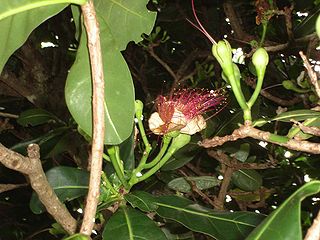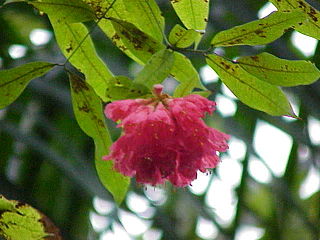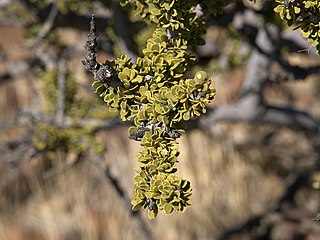| Brazzeia longipedicellata | |
|---|---|
| Scientific classification | |
| Kingdom: | Plantae |
| (unranked): | Angiosperms |
| (unranked): | Eudicots |
| (unranked): | Asterids |
| Order: | Ericales |
| Family: | Lecythidaceae |
| Genus: | Brazzeia |
| Species: | B. longipedicellata |
| Binomial name | |
| Brazzeia longipedicellata Verdc. | |
Brazzeia longipedicellata is a species of plant in the Lecythidaceae family. It is found in the Democratic Republic of the Congo and Uganda.

Plants are mainly multicellular, predominantly photosynthetic eukaryotes of the kingdom Plantae. Historically, plants were treated as one of two kingdoms including all living things that were not animals, and all algae and fungi were treated as plants. However, all current definitions of Plantae exclude the fungi and some algae, as well as the prokaryotes. By one definition, plants form the clade Viridiplantae, a group that includes the flowering plants, conifers and other gymnosperms, ferns and their allies, hornworts, liverworts, mosses and the green algae, but excludes the red and brown algae.

The Lecythidaceae comprise a family of about 20 genera and 250-300 species of woody plants native to tropical South America, Africa, Asia and Australia.

The Democratic Republic of the Congo, also known as DR Congo, the DRC, DROC, Congo-Kinshasa, or simply the Congo, is a country located in Central Africa. It is sometimes anachronistically referred to by its former name of Zaire, which was its official name between 1971 and 1997. It is, by area, the largest country in Sub-Saharan Africa, the second-largest in all of Africa, and the 11th-largest in the world. With a population of over 78 million, the Democratic Republic of the Congo is the most populated officially Francophone country, the fourth-most-populated country in Africa, and the 16th-most-populated country in the world.











